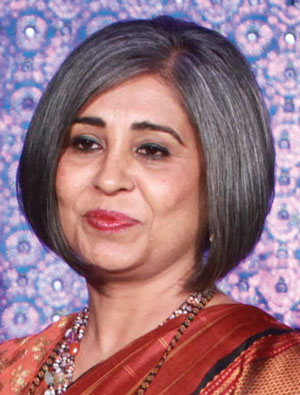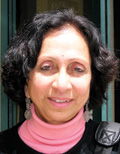|
|
|
ADVERTISEMENTS
|
|
PREMIUM
- HAPPY HOLIDAYS!
- Siliconeer Mobile App - Download Now
- Siliconeer - Multimedia Magazine - email-Subscription
- Avex Funding: Home Loans
- Comcast Xfinity Triple Play Voice - Internet - TV
- AKSHAY PATRA - Bay Area Event - Sat. Dec 6
- Calcoast Mortgage - Home Loans
- New Homes in Silicon Valley: City Ventures - Loden Place - Morgan Hill
- Bombay to Goa Restaurant, Sunnyvale
- Buying, Sellling Real Estate in Fremont, SF Bay Area, CA - Happy Living 4U - Realtor Ashok K. Gupta & Vijay Shah
- Sunnyvale Hindu Temple: December Events
- ARYA Global Cuisine, Cupertino - New Year's Eve Party - Belly Dancing and more
- Bhindi Jewellers - ROLEX
- Dadi Pariwar USA Foundation - Chappan Bhog - Sunnyvale Temple - Nov 16, 2014 - 1 PM
- India Chaat Cuisine, Sunnyvale
- Matrix Insurance Agency: Obamacare - New Healthcare Insurance Policies, Visitors Insurance and more
- New India Bazar: Groceries: Special Sale
- The Chugh Firm - Attorneys and CPAs
- California Temple Schedules
- Christ Church of India - Mela - Bharath to the Bay
- Taste of India - Fremont
- MILAN Indian Cuisine & Milan Sweet Center, Milpitas
- Shiva's Restaurant, Mountain View
- Indian Holiday Options: Vacation in India
- Sakoon Restaurant, Mountain View
- Bombay Garden Restaurants, SF Bay Area
- Law Offices of Mahesh Bajoria - Labor Law
- Sri Venkatesh Bhavan - Pleasanton - South Indian Food
- Alam Accountancy Corporation - Business & Tax Services
- Chaat Paradise, Mountain View & Fremont
- Chaat House, Fremont & Sunnyvale
- Balaji Temple - December Events
- God's Love
- Kids Castle, Newark Fremont: NEW COUPONS
- Pani Puri Company, Santa Clara
- Pandit Parashar (Astrologer)
- Acharya Krishna Kumar Pandey
- Astrologer Mahendra Swamy
- Raj Palace, San Jose: Six Dollars - 10 Samosas
CLASSIFIEDS
MULTIMEDIA VIDEO
|
|
|
|
|
SOCIAL ISSUES:
Sex Selection Fuels Human Trafficking: A Talk with Activist Urmi Basu
New America Media’s Viji Sundaram talked with Urmi Basu, founder and trustee of Kolkata-based New Light shelter program for prostitutes and their children, while Basu was on a brief visit to California on a trip that came ahead of the U.S. broadcast of the PBS documentary "Half the Sky: Turning Oppression into Opportunity for Women Worldwide," which features the work of the activist.
 (Right): Urmi Basu [Photo: Shaun Mader] (Right): Urmi Basu [Photo: Shaun Mader]
The practice of gender selection, grinding poverty among the people and the stifling caste system have contributed to making India the country with the largest number of human trafficking victims in the world today.
The heart-wrenching film takes the viewers to several countries in Africa, South East Asia and India where young girls are victims of unspeakable violence, but where too women’s rights activists are providing them opportunities to get back on their feet when they leave their oppressors. The four-hour film was inspired by the widely acclaimed book of the same name by New York Times columnist Nicholas Kristof and his wife, Sheryl WuDunn.
NAM: When and why did you start New Light, and could you describe the work you are doing.
Basu: I started New Light in 2000, a few years after I had an opportunity to visit a red light area in Mumbai while I was a graduate student at the Tata Institute of Social Sciences. That visit, as well as seeing the [1988] film, Salaam Bombay, made a lasting impression on me, especially when I realized that no concerted effort was being made to bring civic services to families living in the red light areas.
NAM: You say the widespread preference for boy children over girls has contributed to the problem of India’s child trafficking. What’s the connection there?
Basu: The gender ratio in parts of Punjab, Haryana, Rajasthan and Bihar has resulted in a shortage of girls in those states. In some places, for every seven boys there are only three girls. Traffickers see this as a business opportunity. They are bringing girls from Bangladesh and Nepal to those states.
NAM: Are these traffickers from outside places?
Basu: It’s a total misconception to think that traffickers come from outside places. Most of them are from the villages from which the girls are trafficked.
They entice parents with promises of jobs and a better life for their children. Parents, who are living in utter poverty, hand over their children, believing they will send money back home. For a month or two, the trafficker sends the parents some money. Then the trafficker goes back to the village and tells the parents that their child left him without his knowledge.
NAM: The New Light shelter is based in the heart of Kolkata’s red light district. The shelter houses children of prostitutes. But how do you persuade a prostitute to give up her child?
Basu: Most of the girls in the shelter are former school dropouts. What does a mother do? Most times the mothers are grateful we have taken their children in.
We take the sons of prostitutes in as well because about 54 percent of the children who are sexually abused in India are boys. They too need to be given opportunities. And besides, when they are with us, we can teach them that girls need to be respected.
NAM: In a 2011 report, the U.S. State Department ranked India as a “tier-2 country” in terms of sex trafficking, by which it means that the government is not doing enough to eliminate the problem, although it is taking steps to curb it. What is your take on this? Do you think that in the last couple of decades things have improved for women?
Basu: Women in India are far better off today than they were 20 years ago. They are better educated, entering the workforce in larger numbers and empowering themselves.
NAM: The PBS documentary features trafficked and abused girls in East and West Africa and several South East Asian countries, as well. How does the problem there compare to what it is in India?
Basu: India is far ahead of South East Asian countries when it comes to prosecuting cases of trafficking because of the laws the government has passed.
Also, after Hillary Clinton visited Kolkata earlier this year and met with a number of NGOs who are working in the field of human trafficking, she made it clear that she was committed to doing everything she could to end (what she calls “modern day slavery.”) That sends out a signal to us that we need to pay attention to the way girls are treated. She said she was our (the NGOs) greatest cheerleader.
NAM: Bollywood actor Aamir Khan has used his celebrity to make documentaries that shine a light on some of India’s social ills, including child sexual abuse. Has that helped your cause?
Basu: If there’s one human being we should take our hats off to, it is Aamir Khan. He is someone I have a lot of respect for. If he ran for political office tomorrow, I’d vote for him.
NAM: How did New Light come on the radar of the documentary makers?
Basu: I’ve known Nicholas Kristof for some seven or eight years now. He has visited our shelter and seen what we are doing – in fact, he has mentioned us in his book, Half the Sky. He must have seen we were not a fly-by-night operation.
NAM: It must be really expensive to run all the shelters and feed and educate so many children. Do you think that after people see the documentary, donations to New Light will spike?
Basu: We have been getting donations all these years from people in different countries, some of whom have not even visited us. Our operating budget is about $250,000 a year, about 80 percent of which comes from foreign donors. If the documentary brings in more donations, we will welcome that.
|
 Viji Sundaram is the health editor at New America Media in San Francisco. Viji Sundaram is the health editor at New America Media in San Francisco.
|
|
|
|
|
|